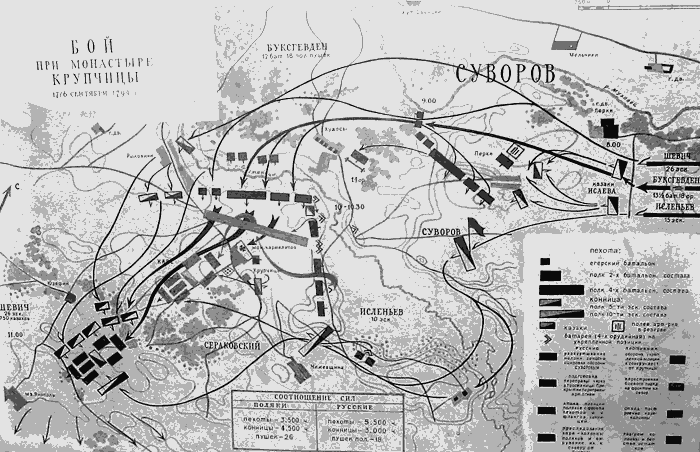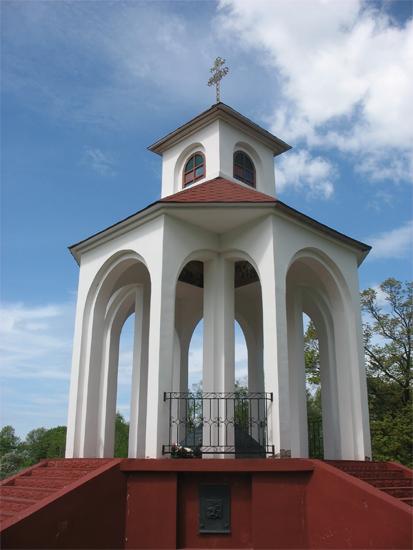The Battle of Krupchitsy — historical route across key sites.
Tourist routes of the Zhabinka District - “KRUPCHYTSY BATTLE”
Chyzhevshchyna – Bahdany – Tseliaki – Azyaty – Staroje Sialo – Stryhanets – Rakitnitsa – Bulkova.
Among the many events that took place on our land, one had world-historical significance. The scale of the Krupchytsy battle, which on 17 September 1794 unfolded on the easternmost edge of the Zhabinka area, impressed contemporaries and still arouses considerable interest among descendants.

This was not merely a vivid episode of the national-liberation uprising led by Tadeusz Kościuszko, but a battle in which the fate of whole peoples and countries was decided for many ages. It was the largest battle on Belarusian lands during the Kościuszko Uprising, in which some 16,000 warriors took part on both sides. The insurgent forces were commanded by General Karol Sierakowski, the Russian forces by Alexander Suvorov.
The tourist route begins at the site of the battle, which lasted from dawn until 4 p.m. on 17 September 1794. The former village of Krupchytsy no longer exists. In the 1970s it was incorporated into Chyzhevshchyna.
Several notable monuments were erected at the battlefield to commemorate the event. In 1894 — on the centenary of the battle — the St. Vladimir church-monument was consecrated, created through the efforts of the priest Mikanor Katovich, whose grave is located near the church.

In the center of Chyzhevshchyna, on the site of former Catholic cemeteries, the Krupchytsy memorial chapel — a monument to the participants and victims of the battle — was erected in autumn 2004. On the slabs placed in the chapel the names of all regiments that fought on the Krupchytsy Great Field are inscribed. The monument is topped by a cross similar to the one made in the 11th century for the patroness of the Belarusian land, Euphrosyne of Polotsk. Under the ceilings of the building there are paintings depicting moments of intense confrontation.
On the outskirts of Chyzhevshchyna, near the former so‑called "French" dam, there has been an obelisk since 1952 that commemorates the participation of A. Suvorov and K. Sierakowski in the battle.
Traces of earlier times are still preserved in the area, and in folk tales the memory of the "Krupchytsy war" still lives on.
A traveler can follow the route along which Sierakowski’s men retreated after the prolonged battle. For this, one should head through Bahdany, where the insurgents had a short rest, and Tseliaki in the direction of Azyaty.
This village is primarily known as the birthplace of the historian, ethnographer and collector of folk songs and rituals Yulian Fomich Krachkovsky (1840–1903). A memorial plaque in honor of the famous countryman was installed on the Azyaty House of Culture building in 1995.
In nearby Staroje Sialo the insurgents stopped for literally a few minutes. A modern traveler can pause longer, since the village is closely linked to Belarus’s military history as the place where, in the first days of the Great Patriotic War, a partisan detachment named after M.M. Charnaak was formed. In the local school one can view a small but informative museum of military glory dedicated to the partisan movement in the Zhabinka area.
In the evening of 17 September 1794 part of Sierakowski’s forces moved via Stryhanets and Rakitnitsa toward Bulkova, where the insurgents set fire to the bridge to prevent Suvorov from quickly organizing a pursuit. At this spot on the Brest–Minsk highway there is now a modern bridge. Here the traveler who has chosen a route linked to the events of 1794 leaves the borders of the Zhabinka District and, if desired, can continue toward Brest, near which, two days after Krupchytsy, the Terespol battle took place, in which Sierakowski’s corps was finally annihilated.